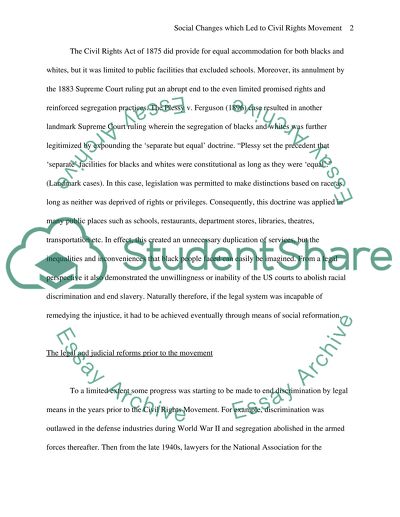Cite this document
(Major Social Changes in America Which Led to the Civil Rights Movement Research Paper, n.d.)
Major Social Changes in America Which Led to the Civil Rights Movement Research Paper. Retrieved from https://studentshare.org/social-science/1549696-you-choose
Major Social Changes in America Which Led to the Civil Rights Movement Research Paper. Retrieved from https://studentshare.org/social-science/1549696-you-choose
(Major Social Changes in America Which Led to the Civil Rights Movement Research Paper)
Major Social Changes in America Which Led to the Civil Rights Movement Research Paper. https://studentshare.org/social-science/1549696-you-choose.
Major Social Changes in America Which Led to the Civil Rights Movement Research Paper. https://studentshare.org/social-science/1549696-you-choose.
“Major Social Changes in America Which Led to the Civil Rights Movement Research Paper”, n.d. https://studentshare.org/social-science/1549696-you-choose.


